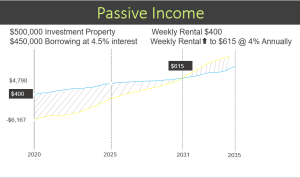Real Estate Photography Tips to Attract Buyers serves as your guide to mastering the art of capturing compelling images that can significantly boost property appeal. In a competitive market, the visual presentation of a home is more crucial than ever. With the right techniques, you can create stunning photographs that entice potential buyers and showcase a property’s best features.
From understanding lighting and composition to using the right equipment and editing techniques, this guide will provide essential insights that every real estate agent or homeowner should know. By implementing these tips, you can enhance your property listings and increase the likelihood of attracting serious buyers.
In the era of digital connectivity, the way we communicate has transformed dramatically. Social media platforms, instant messaging, and various applications have redefined not just how we share information, but also how we cultivate relationships, build communities, and influence society. This article aims to delve deep into the multifaceted aspects of digital communication, exploring its benefits, drawbacks, and the profound implications it has on personal and professional interactions.### The Evolution of CommunicationHistorically, communication has undergone significant changes.
From the invention of the telephone to the rise of the internet, each advancement has brought us closer together while simultaneously introducing new challenges. Initially, face-to-face communication dominated human interactions. However, with the advent of technology, especially in the last two decades, we have seen a significant shift.The introduction of emails, followed by instant messaging services, and subsequently social media platforms, has allowed individuals to connect with anyone around the globe in real time.
This evolution marks a pivotal moment in human history, making information exchange faster and more efficient than ever before.### The Positive Impacts of Digital Communication#### Enhanced ConnectivityOne of the most significant benefits of digital communication is the ability to connect with people irrespective of geographical boundaries. Families separated by continents can share moments through video calls, friends can maintain relationships despite busy schedules, and professionals can collaborate across different time zones.
Platforms like Zoom, WhatsApp, and Slack have become staples in both personal and professional communication.#### Access to InformationDigital communication has democratized information access. Individuals can now obtain knowledge on virtually any topic within seconds. Educational resources, professional courses, and countless articles are available at our fingertips. This wealth of information empowers individuals to learn and grow, fostering both personal development and professional advancement.#### Building CommunitiesThe internet has enabled the formation of communities that transcend physical locations.
Niche groups can connect over shared interests, whether it’s hobbies, professions, or causes. This not only fosters a sense of belonging but also encourages collaboration and support among members. Platforms like Facebook Groups and Reddit allow individuals to engage with like-minded people, share experiences, and provide assistance to one another.#### Business OpportunitiesFor businesses, digital communication has opened up new avenues for marketing and customer engagement.
Companies can reach wider audiences through social media marketing, email campaigns, and online advertising. Engaging with customers in real time allows businesses to gather feedback, address concerns, and build stronger relationships. Moreover, the ability to analyze data from these interactions provides insights that can drive strategic decisions.### The Challenges of Digital CommunicationWhile digital communication offers numerous advantages, it also presents several challenges that cannot be overlooked.#### Miscommunication and MisinterpretationOne of the primary drawbacks of digital communication is the potential for miscommunication.
Tone and context can easily be lost in text-based messages. A simple phrase might be interpreted in multiple ways, leading to misunderstandings. This issue is particularly evident in professional settings, where clarity is crucial.#### The Impact on RelationshipsDespite the ability to connect with others, there is a growing concern that digital communication may hinder the depth of relationships. The convenience of texting or messaging can lead to a decrease in meaningful face-to-face interactions.
People may find themselves engaging in superficial conversations rather than nurturing deeper connections. This trend is particularly concerning among younger generations, who may prioritize online interactions over in-person relationships.#### Information OverloadWith the vast amount of information available online, individuals often experience information overload. The constant influx of notifications, emails, and updates can be overwhelming, making it difficult to discern what is important.
This can lead to decreased productivity and increased stress levels, as individuals struggle to keep up with the digital chatter.#### Privacy ConcernsAs digital communication becomes more prevalent, privacy concerns have also risen. With the sharing of personal information online, individuals must navigate the potential risks associated with data breaches and identity theft. Social media platforms have faced scrutiny over their handling of user data, prompting many to reconsider their online presence and the information they share.### Navigating Digital Communication EffectivelyGiven the complexities of digital communication, it is essential to develop strategies for navigating this landscape effectively.
Here are some tips to maximize the benefits while minimizing the drawbacks.#### Be Clear and ConciseWhen communicating digitally, clarity is key. Take the time to craft messages that are straightforward and devoid of ambiguity. Avoid using jargon or overly complex language that may confuse the recipient. If necessary, follow up with a phone call or video chat to clarify any points that may have been misunderstood.#### Balance Online and Offline InteractionsWhile digital communication is convenient, it is vital to strike a balance between online and offline interactions.
Make a conscious effort to engage in face-to-face conversations, whether with friends, family, or colleagues. This not only strengthens relationships but also enhances communication skills that may be dulled by excessive digital interactions.#### Manage Your NotificationsTo combat information overload, consider managing your notifications more effectively. Set specific times to check emails and social media, rather than allowing them to interrupt your daily activities.
This approach can help you maintain focus and reduce stress levels.#### Protect Your PrivacyBe proactive in safeguarding your personal information online. Familiarize yourself with the privacy settings of the platforms you use and make informed decisions about what to share. Regularly review your online presence and remove any outdated or unnecessary information that could compromise your privacy.### The Future of Digital CommunicationAs technology continues to evolve, so too will digital communication.
Emerging trends such as artificial intelligence and virtual reality are set to reshape how we connect and interact. AI-powered chatbots, for instance, are already being used in customer service to provide instant responses, while virtual reality platforms offer immersive communication experiences.However, with these advancements comes the need for ongoing discussions about ethics and privacy. As we embrace new technologies, it is crucial to consider the implications they may have on our communication styles and societal norms.### ConclusionDigital communication has revolutionized the way we connect with one another, offering unparalleled opportunities for interaction, collaboration, and learning.
However, it is essential to remain mindful of the challenges it presents, from miscommunication to privacy concerns. By developing effective communication strategies and fostering a balance between online and offline interactions, we can harness the full potential of digital communication while minimizing its drawbacks. As we move forward, embracing the evolution of communication will undoubtedly shape the future of our interpersonal relationships and societal interactions.
Top FAQs: Real Estate Photography Tips To Attract Buyers
What equipment do I need for real estate photography?
While a good DSLR or mirrorless camera is ideal, a high-quality smartphone can also be effective. A tripod and wide-angle lens are recommended for capturing more of the space.
How important is natural light in real estate photography?
Natural light is crucial as it enhances the ambiance of a space, making it look more inviting. Schedule shoots during the day when natural light is abundant.
Should I edit my real estate photos?
Yes, editing can help adjust lighting, color balance, and remove any distractions, leading to a polished final image that attracts buyers.

What are the common mistakes to avoid in real estate photography?
Avoid cluttered spaces, poor lighting, and using a low-resolution camera. Ensure the images are clear, well-composed, and representative of the property.
How can I make a small room look larger in photos?
Use a wide-angle lens, shoot from a corner, and ensure the room is well-lit to create a sense of space and openness.






